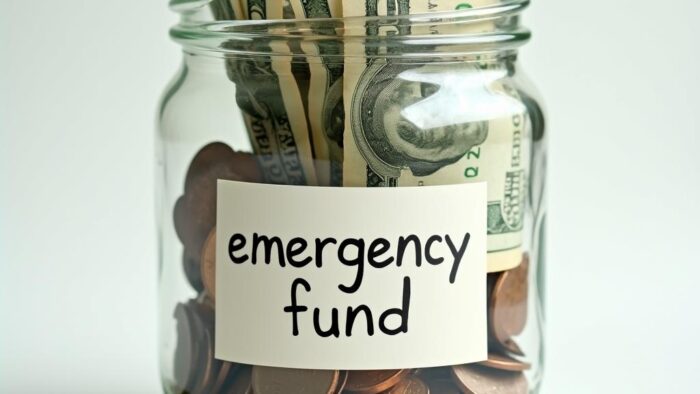How to Build an Emergency Fund from Scratch
In today’s unpredictable financial landscape, having an emergency fund is essential for anyone looking to secure their financial future. Emergency funds serve as a safety net during unforeseen circumstances such as job loss, medical emergencies, or unexpected repairs. This comprehensive guide will walk you through the steps on how to build an emergency fund from scratch, ensuring that you are prepared for whatever life throws your way.
Understanding the Importance of an Emergency Fund
Before diving into the specifics of creating an emergency fund, it’s crucial to understand why such a fund is necessary. Financial experts recommend saving three to six months’ worth of living expenses. Here’s why having this cushion is vital:
- Peace of Mind: Knowing that you have a financial buffer can reduce stress and help you focus on other important aspects of your life.
- Financial Stability: An emergency fund prevents you from falling into debt when unexpected expenses arise. It allows you to handle situations without relying on credit cards or loans.
- Future Planning: Building an emergency fund lays the groundwork for other financial goals, such as saving for retirement or investing in a property.
Steps to Build an Emergency Fund from Scratch
1. Set a Goal for Your Emergency Fund
The first step in building an emergency fund is to determine how much you need to save. Assess your monthly expenses, including rent, utilities, groceries, and transportation. Multiply this amount by three to six to set a realistic target. For instance, if your monthly expenses are $2,000, aim for an emergency fund between $6,000 and $12,000.
2. Analyze Your Budget
Once you have your target amount, it’s time to assess your current financial situation by analyzing your budget. Take a look at your income and expenses:
- Identify Necessities vs. Luxuries: List your mandatory expenses and distinguish them from discretionary spending. This will help you understand where you can cut back.
- Track Your Spending: Use budgeting tools or apps to monitor your spending habits. This awareness can lead to better financial decisions.
3. Create a Savings Strategy
With your financial analysis in hand, the next step is to implement a strategic savings plan. Consider the following methods:
- Automated Savings: Set up an automatic transfer from your checking account to your savings account every month. This makes saving effortless and ensures you prioritize building your fund.
- Percentage-Based Saving: Commit to saving a specific percentage of your monthly income. For example, you might decide to save 10% of every paycheck until you reach your goal.
- One-Time Windfalls: Whenever you receive extra income, such as a bonus or tax refund, consider putting a portion of it directly into your emergency fund.
4. Open a High-Interest Savings Account
To maximize your savings, consider opening a high-interest savings account or a money market account. These accounts typically offer higher interest rates than traditional savings accounts, helping your money grow while remaining easily accessible. Ensure that the account has no fees or minimum balance requirements, so you don’t hinder your progress.
5. Cut Unnecessary Expenses
To expedite your emergency fund growth, look for ways to reduce your monthly expenses:
- Cancel Unused Subscriptions: Review your subscriptions for services you rarely use, such as streaming platforms or gym memberships.
- Cook at Home: Eating out can quickly drain your budget. Focus on meal prepping and cooking at home to save money.
- Shop Smart: Take advantage of sales, use coupons, and buy in bulk to reduce grocery costs.
6. Monitor Your Progress
Keeping track of your savings progress is essential to staying motivated. Regularly check your emergency fund’s growth and celebrate milestones, such as reaching one-third or half of your goal. Visualization tools, such as graphs or charts, can help you see your progress and encourage you to stick with your plan.
7. Review and Adjust as Necessary
Your financial situation may change over time, so it’s important to review and adjust your savings strategy regularly. If you receive a raise or a new source of income, consider increasing your savings contributions. Conversely, if you face financial difficulties, it may be necessary to adjust your savings rate temporarily.
What to Avoid When Building Your Emergency Fund
While focusing on how to build an emergency fund from scratch, it’s important to avoid certain pitfalls:
- Panic Spending: Resist the urge to use your emergency fund for non-emergencies. Save it for unexpected events only.
- Neglecting Other Financial Goals: While building your emergency fund is crucial, ensure you still make progress on other financial commitments like retirement savings or debt repayment.
Conclusion
Building an emergency fund from scratch is a critical financial step that everyone should take. By setting clear goals, analyzing your budget, creating a savings strategy, and continually monitoring your progress, you can establish a robust financial safety net. With patience and dedication, you’ll not only gain peace of mind but also secure your financial future against life’s uncertainties. Start today, and take the first steps toward a more secure tomorrow!


